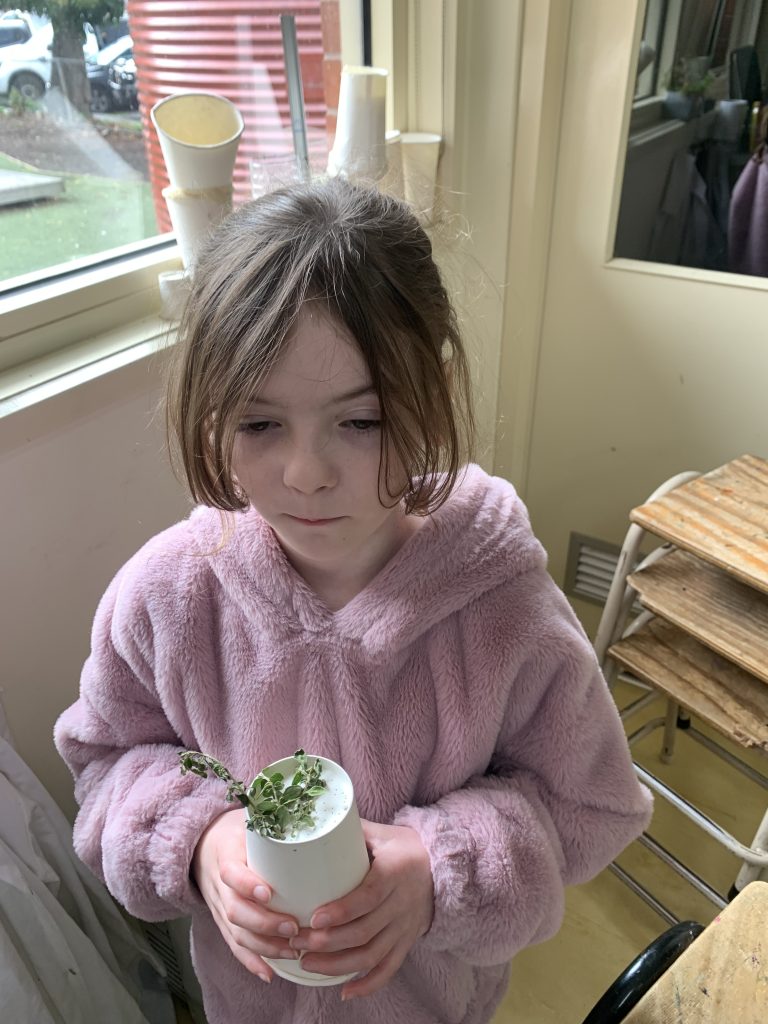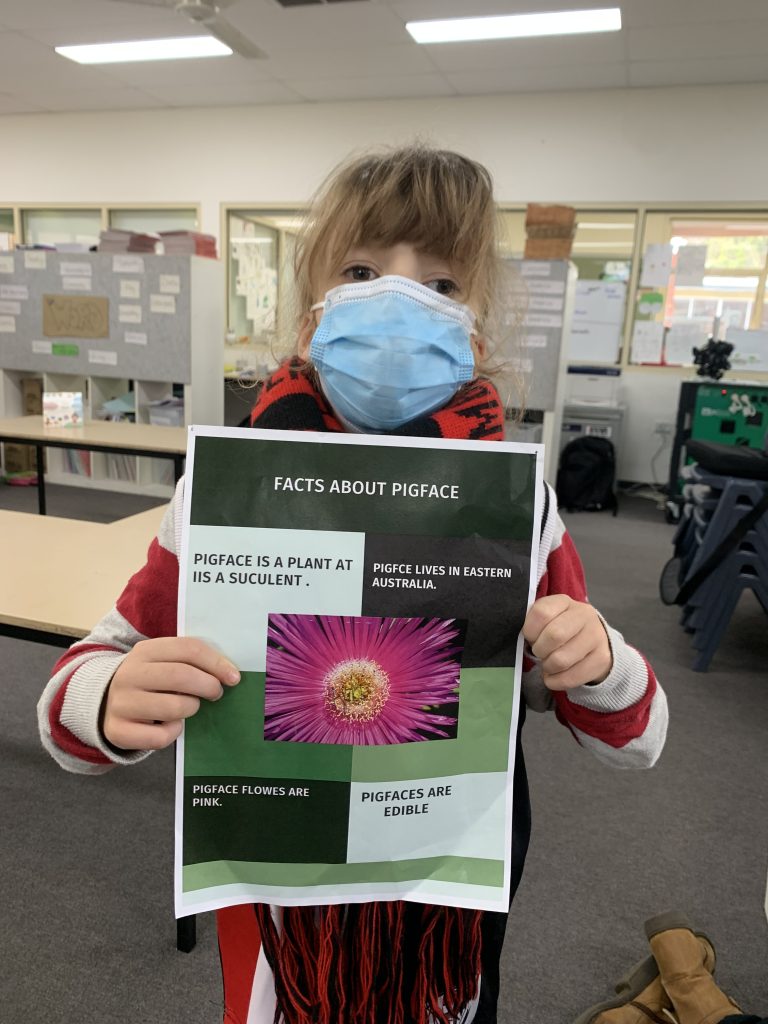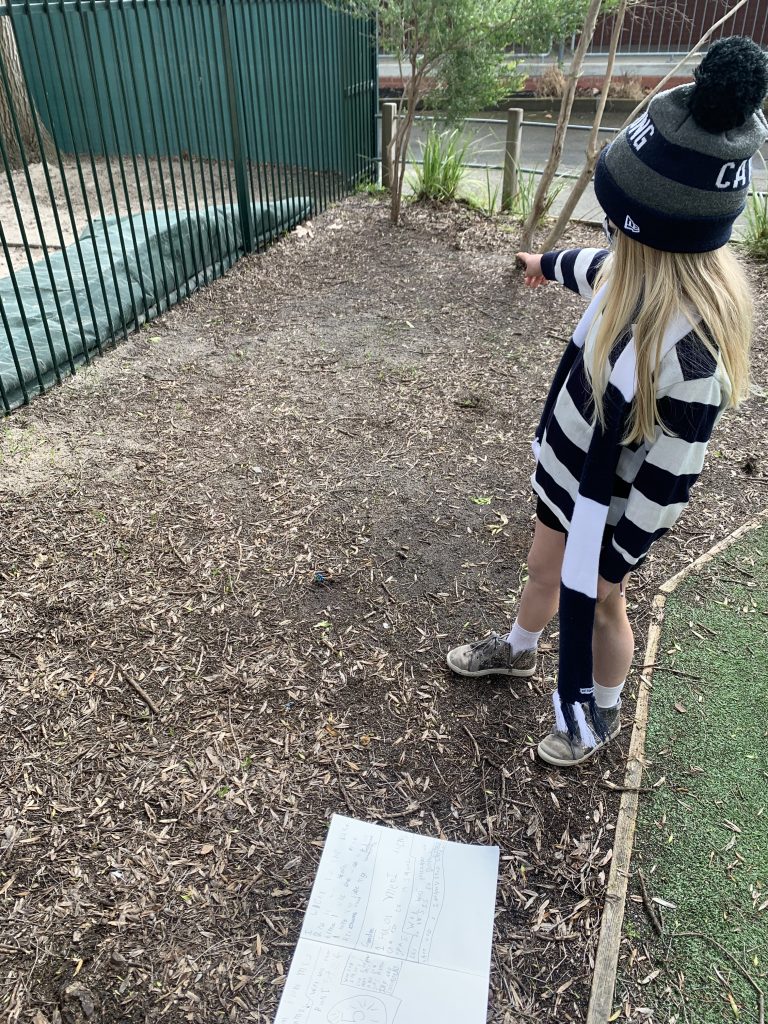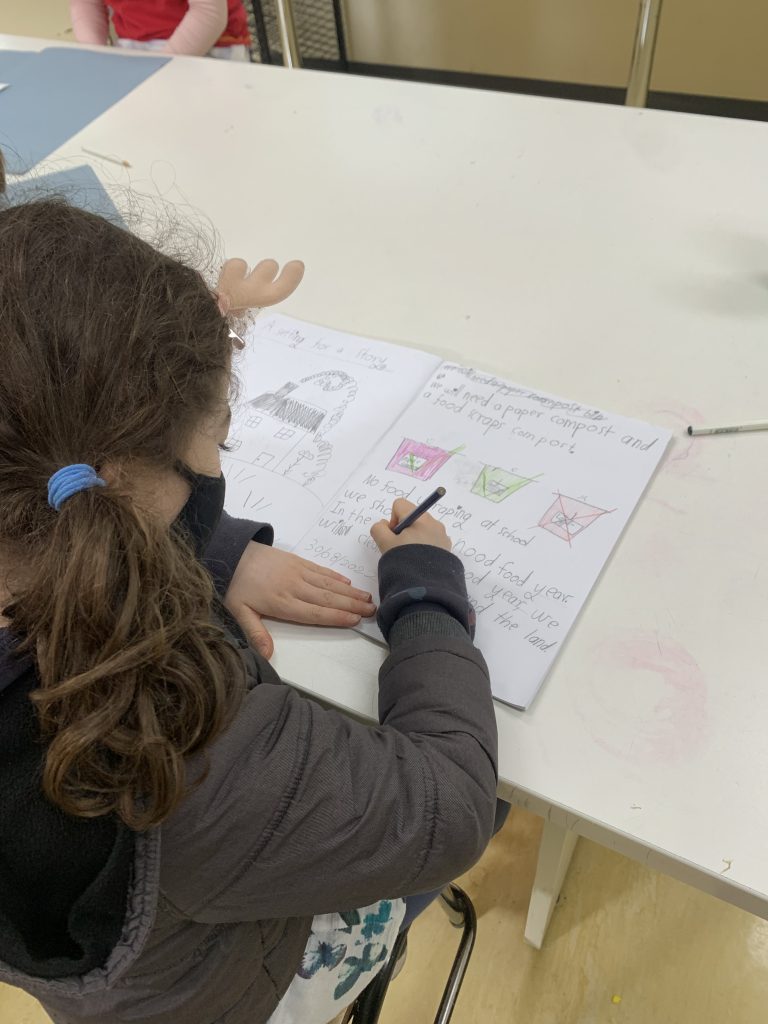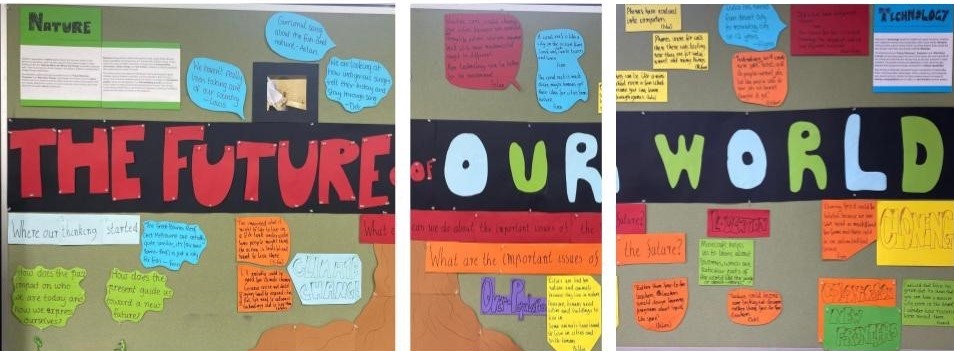Research for our Indigenous Garden is transforming into designing, inventing, mapping, measuring, proposing, planning, preparing, testing, tinkering, visualising and further research. Work and progress is taking a much more physical form and this has generated a fresh buzz of excitement and anticipation.
Within the documentation below, we have also noted that different groups’ work and research have enabled them to support other groups. This highlights the coming together and collaboration inherent in a collective inquiry project.
We will let the photos and the children do the talking from here.
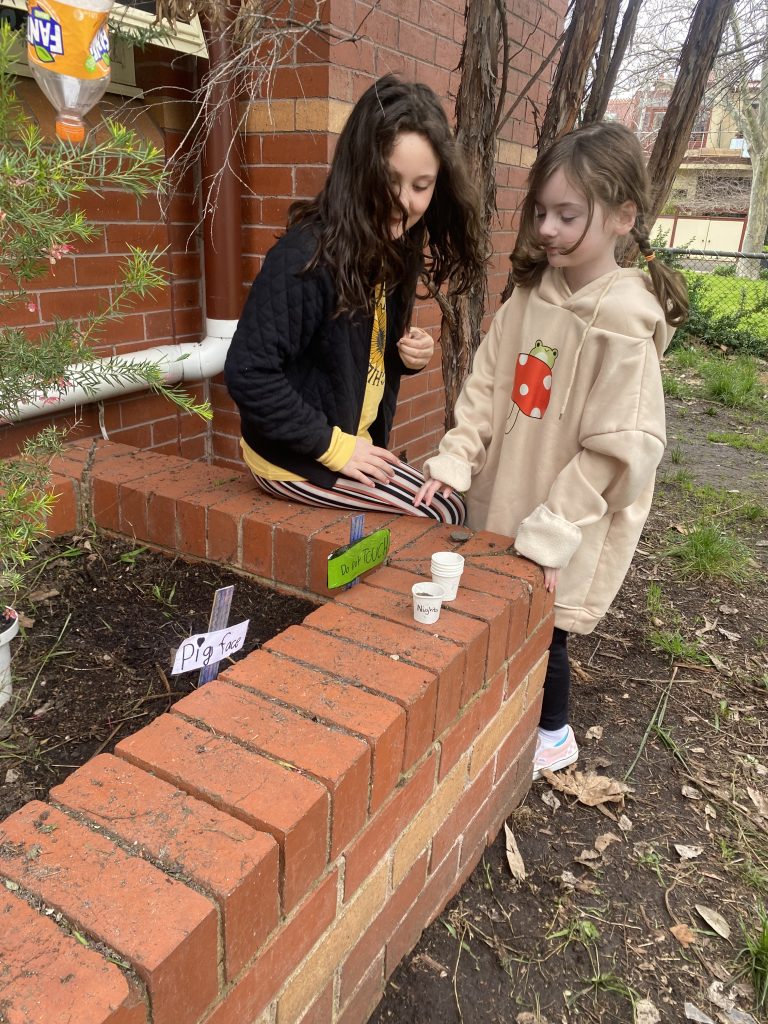
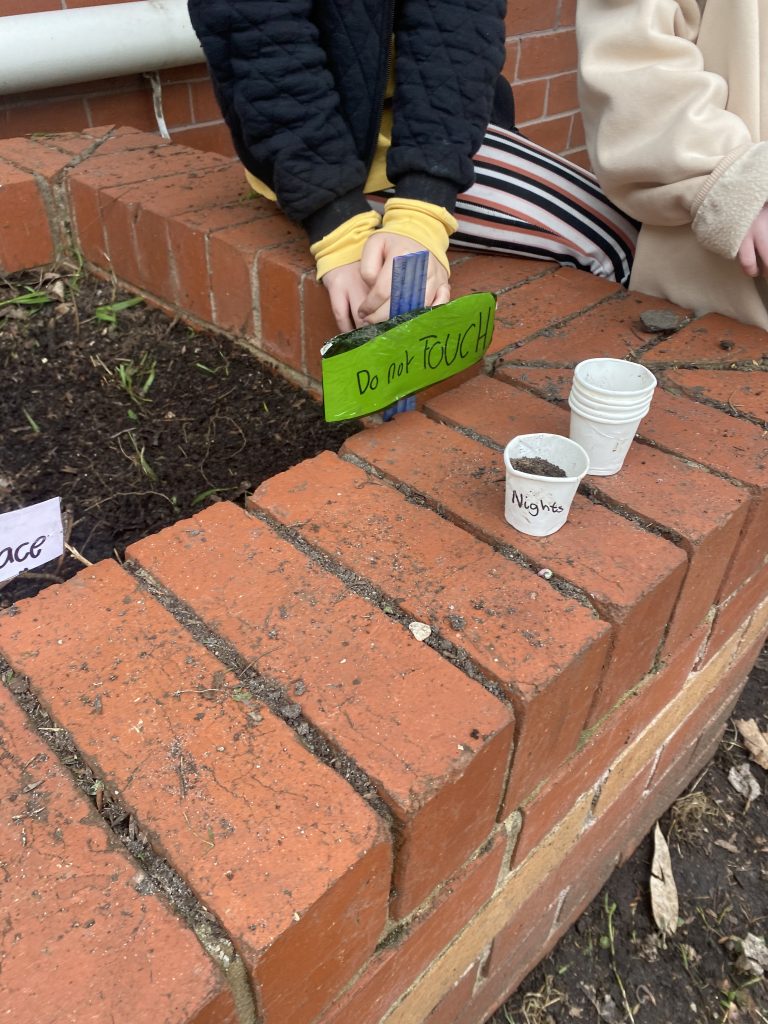
“My groups have researched and are making plant signs for the garden. We are also now helping other groups make signs that they need.” (Zara)
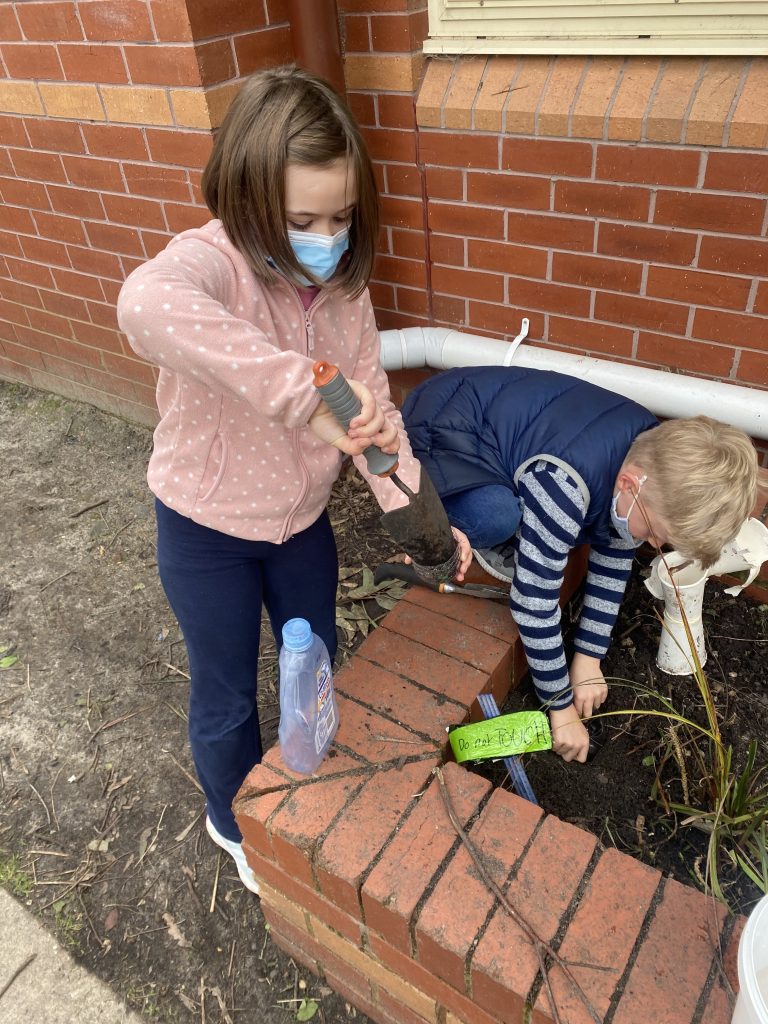
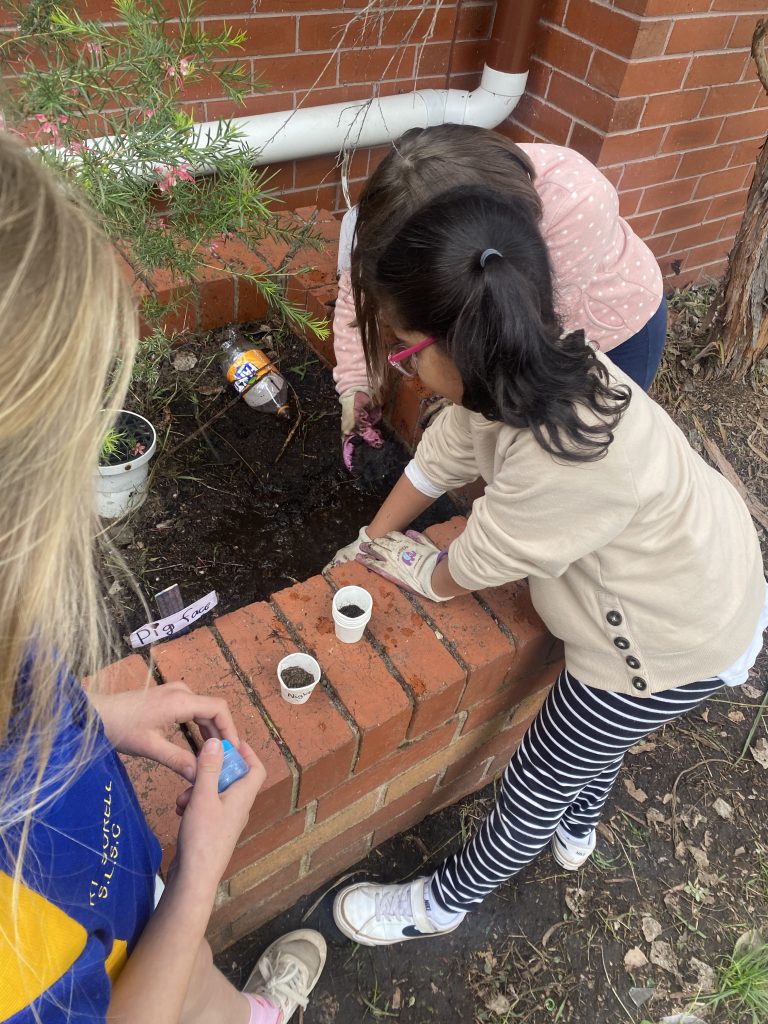
“We’re inventing a self-watering system with plastic bottles. We are making a few inventions so we know which one works best.” (Aaliyah)
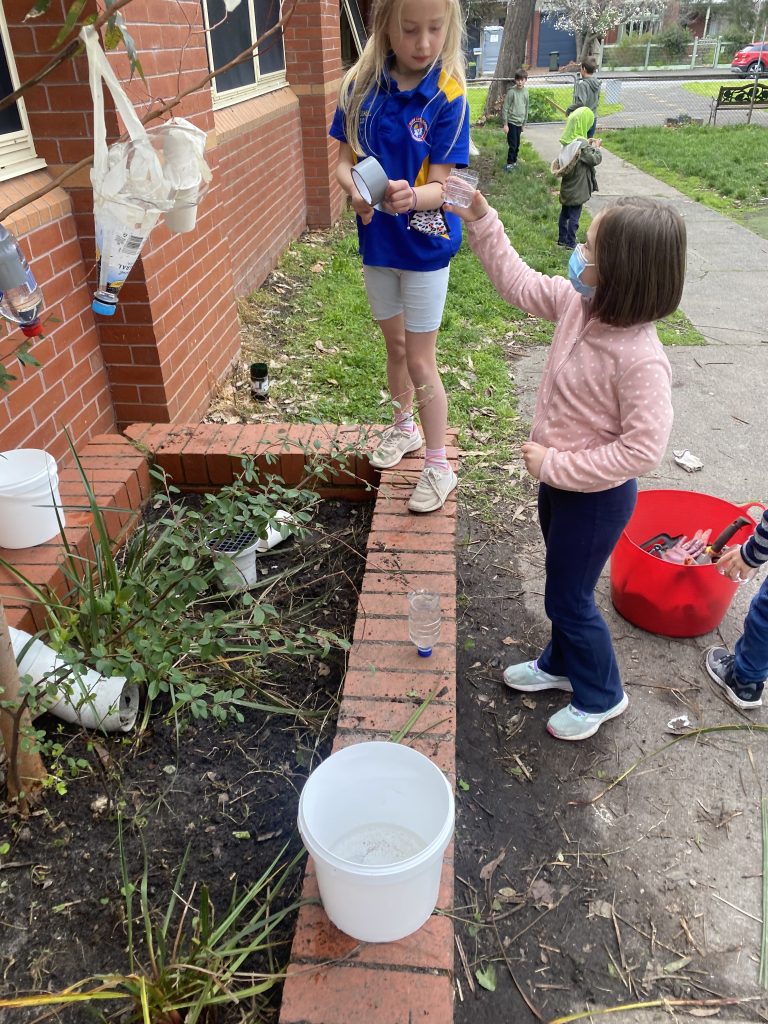
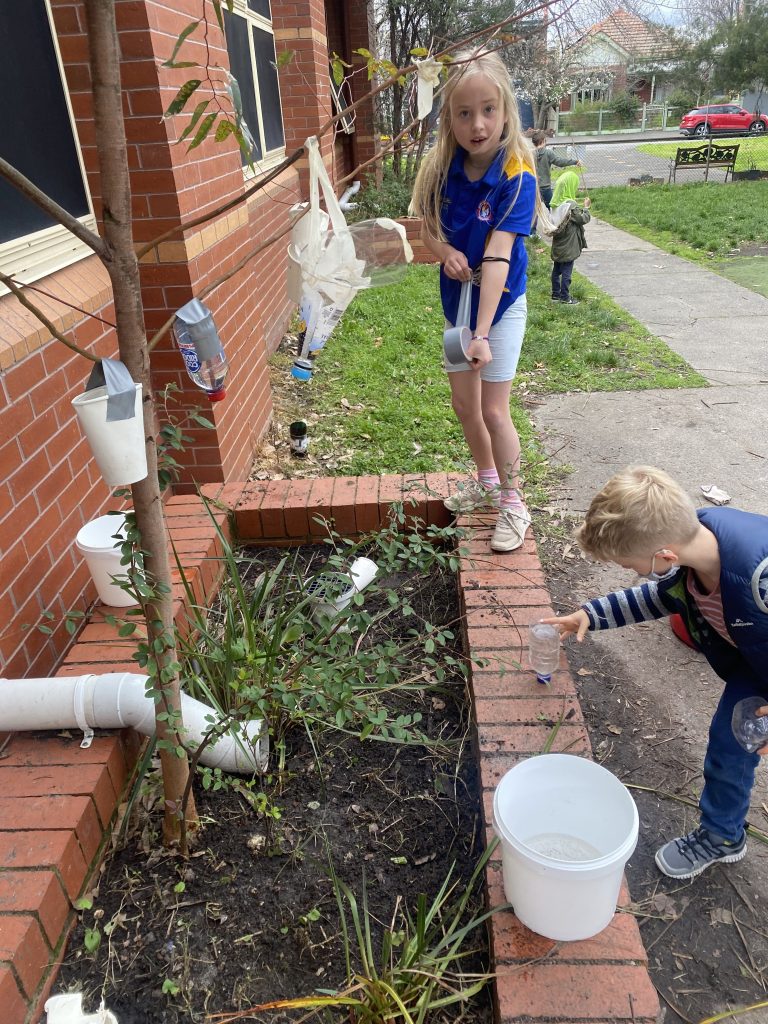
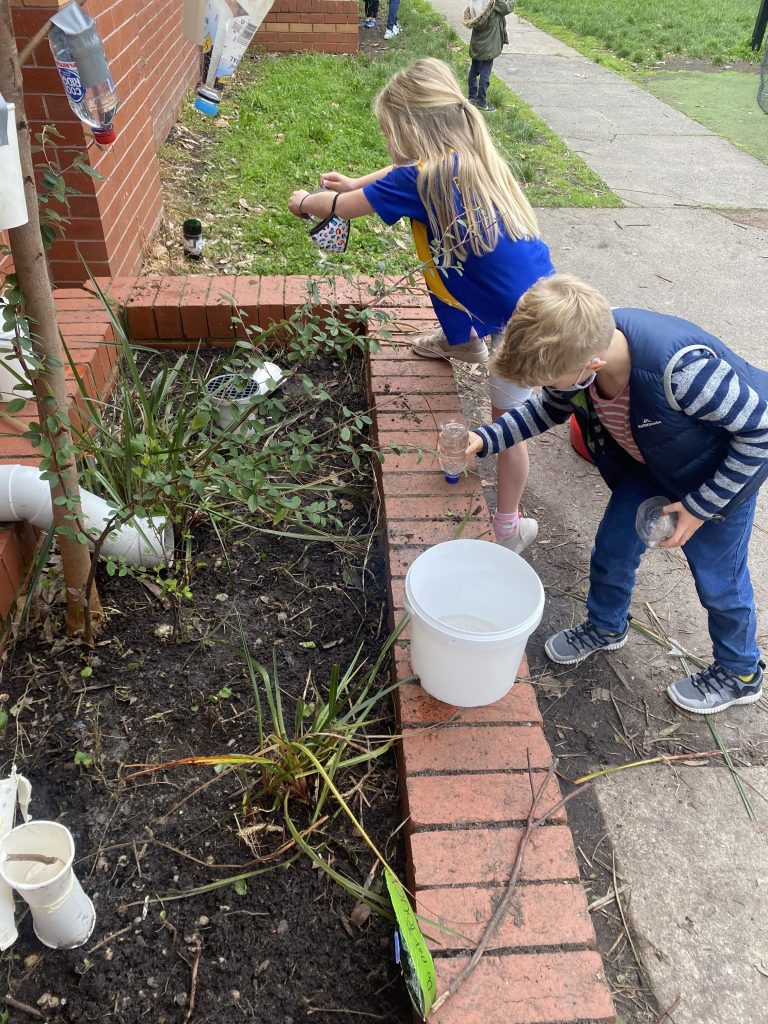
“We are trying to find out how we could catch the rain that doesn’t hit our self-watering system.” (Finn)
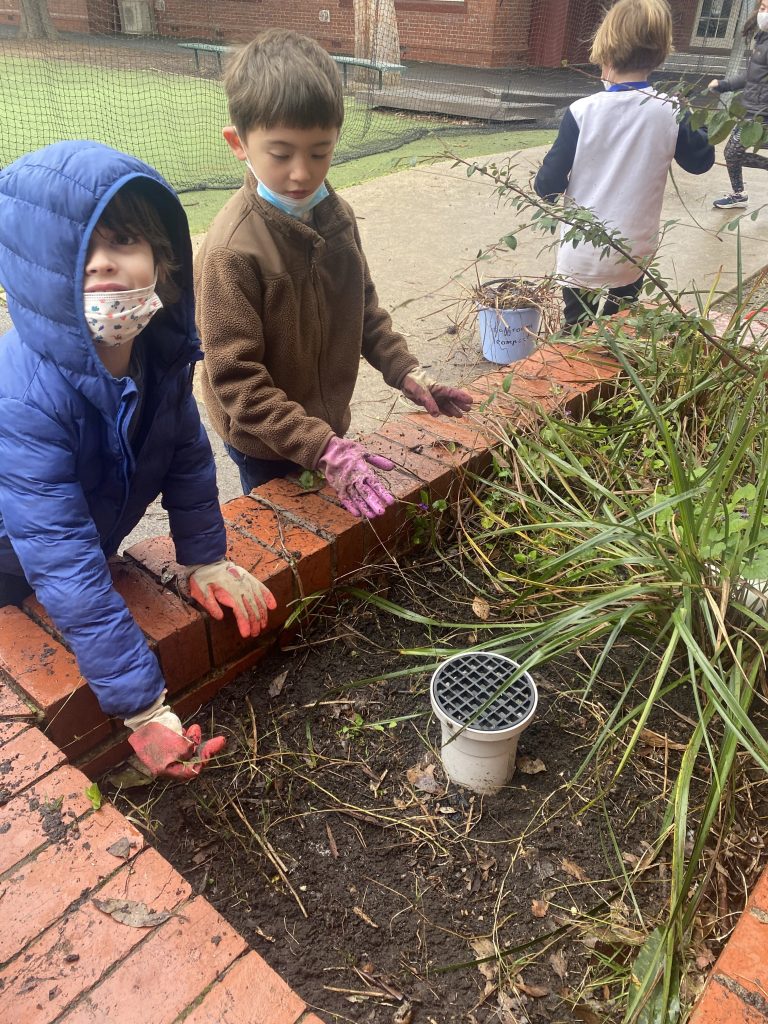
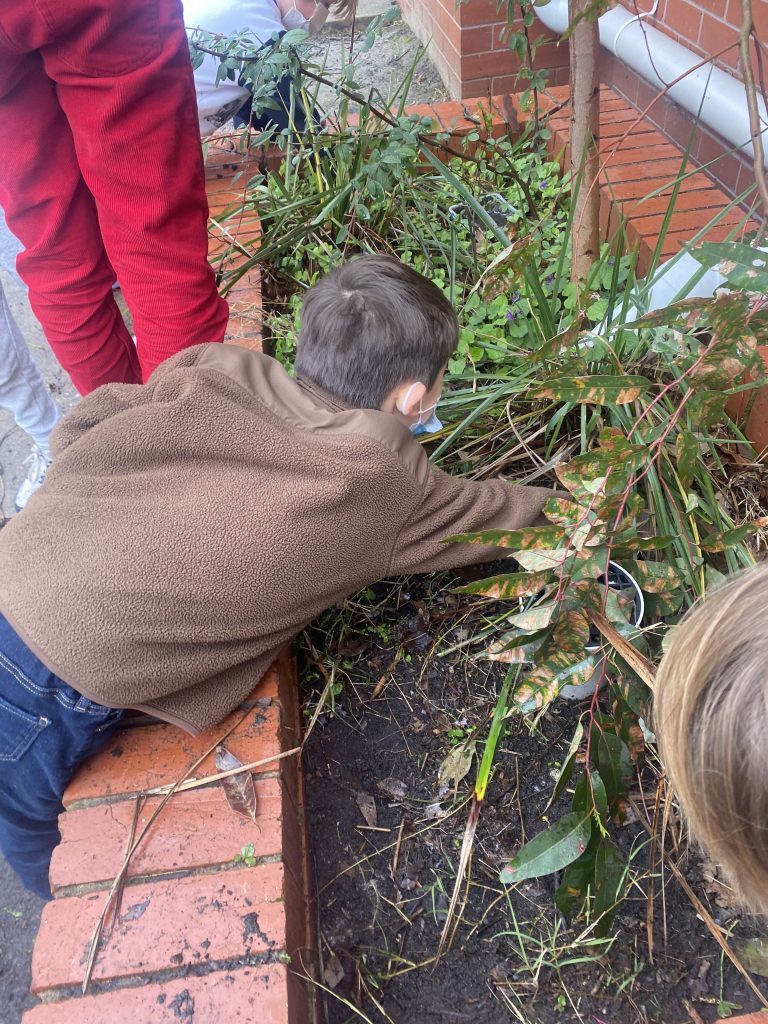
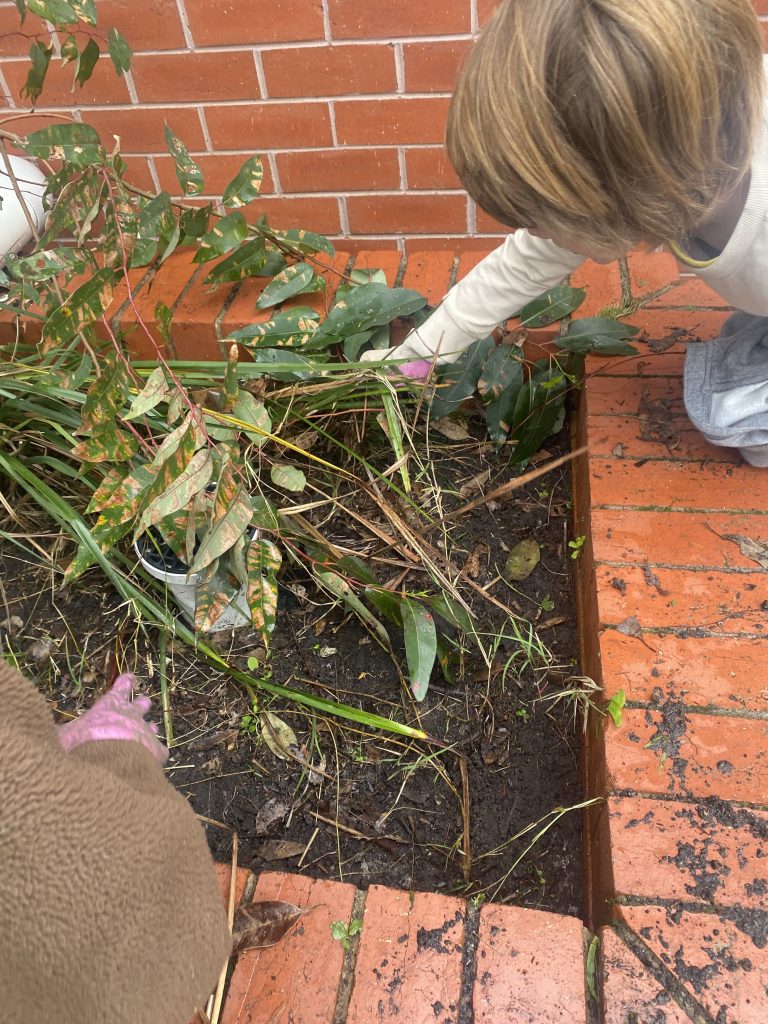
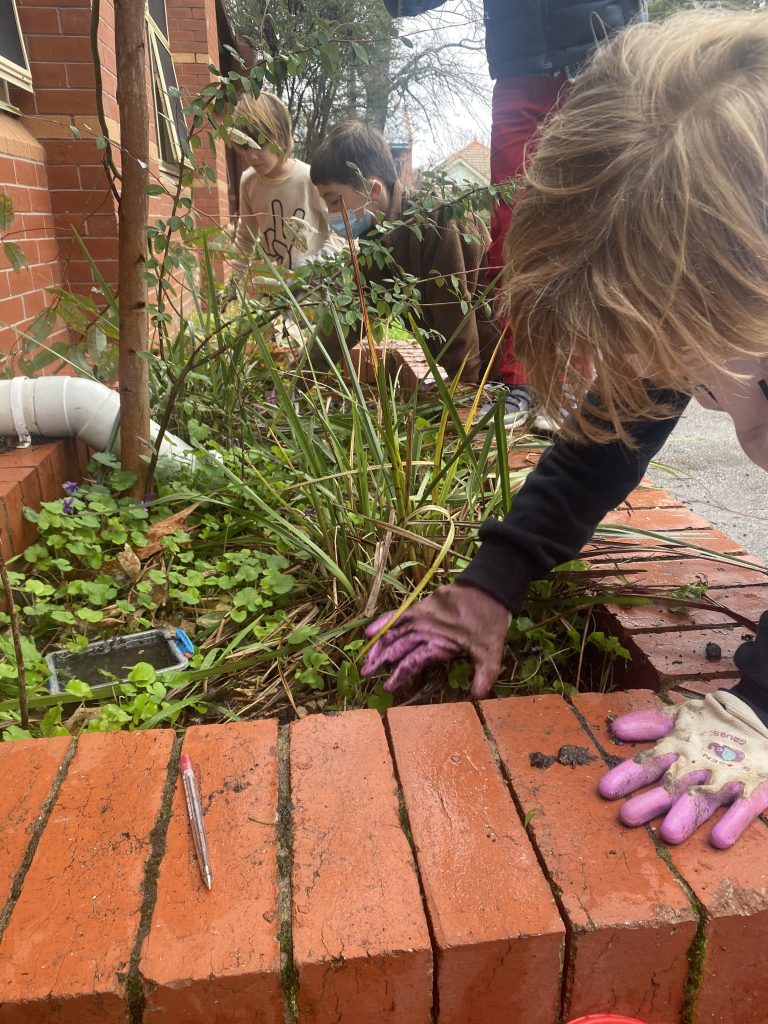
“My group is weeding to make more room for the native plants. We have found snails but we are not sure if they should be there.” (Seb)
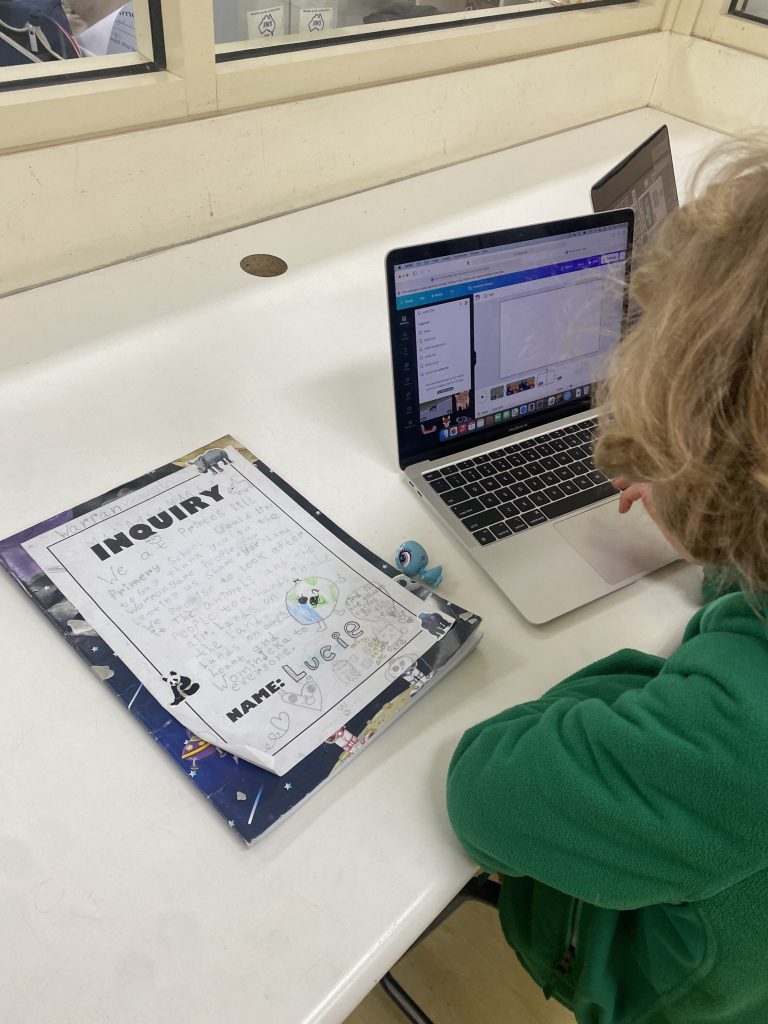
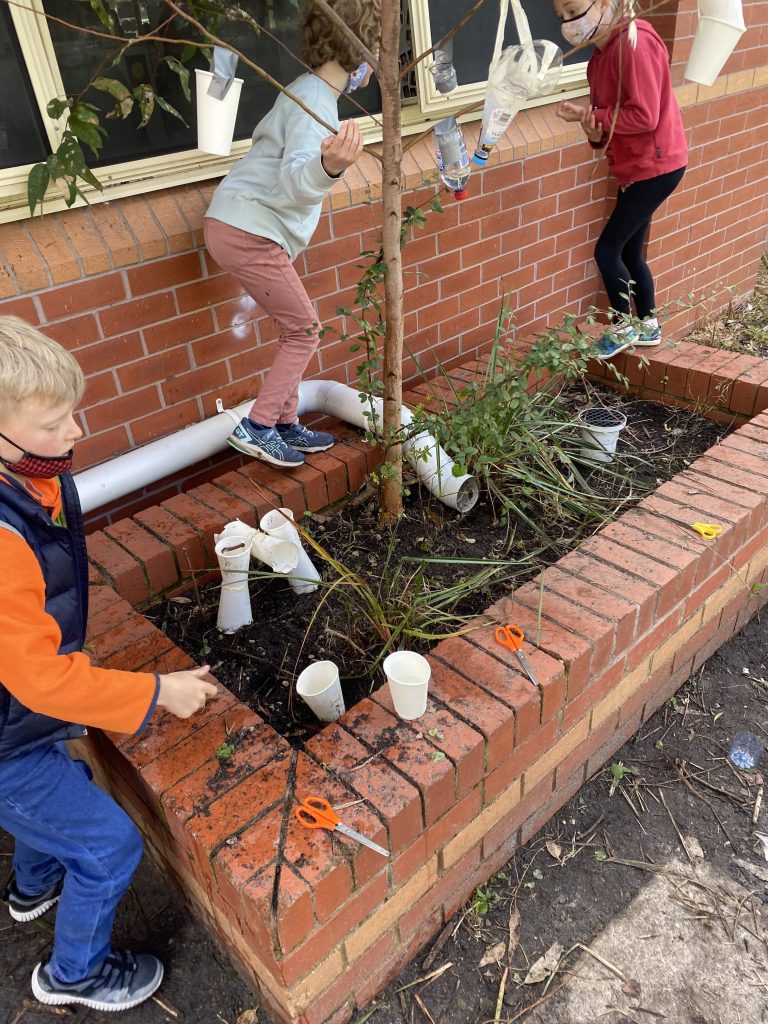
“Sakura and I have been helping the self-watering groups to test to see if the soil is moist because Saltbush needs moist soil when it is a young plant.” (Lucienne)
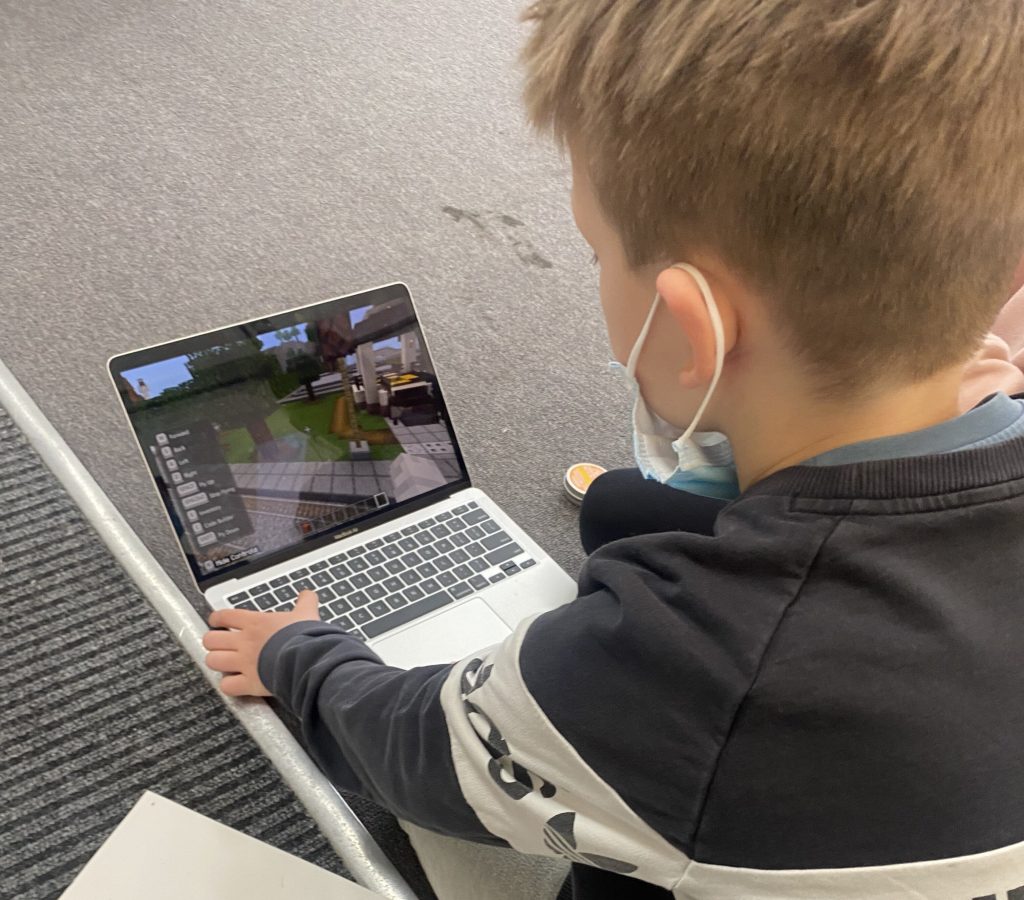
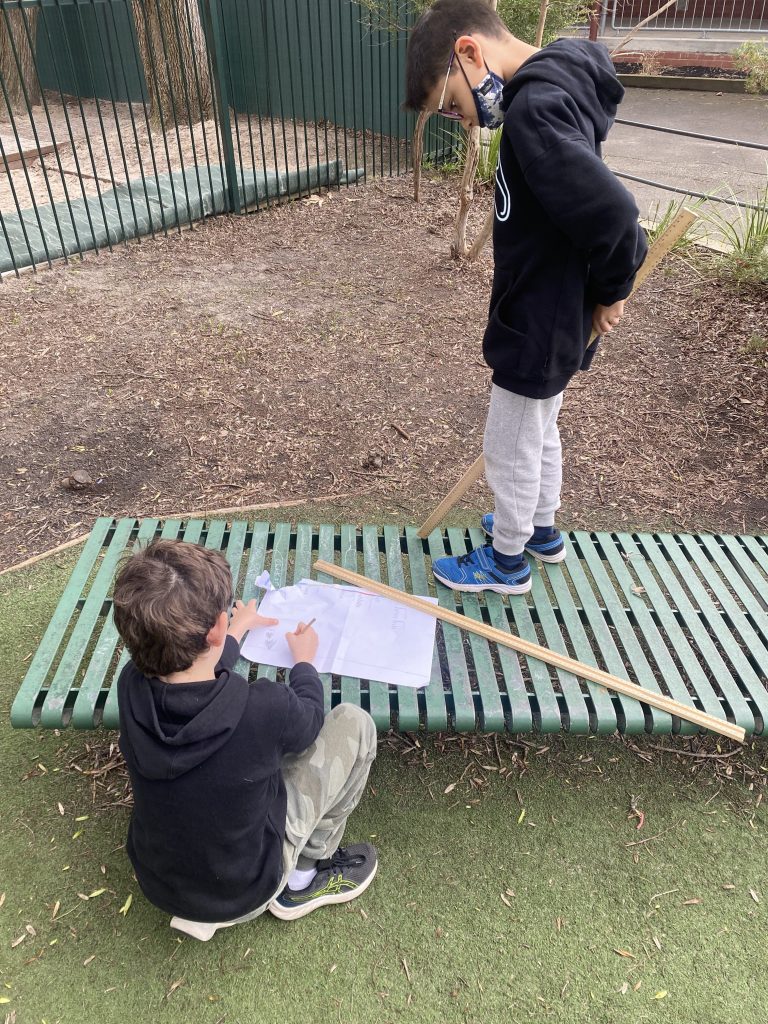
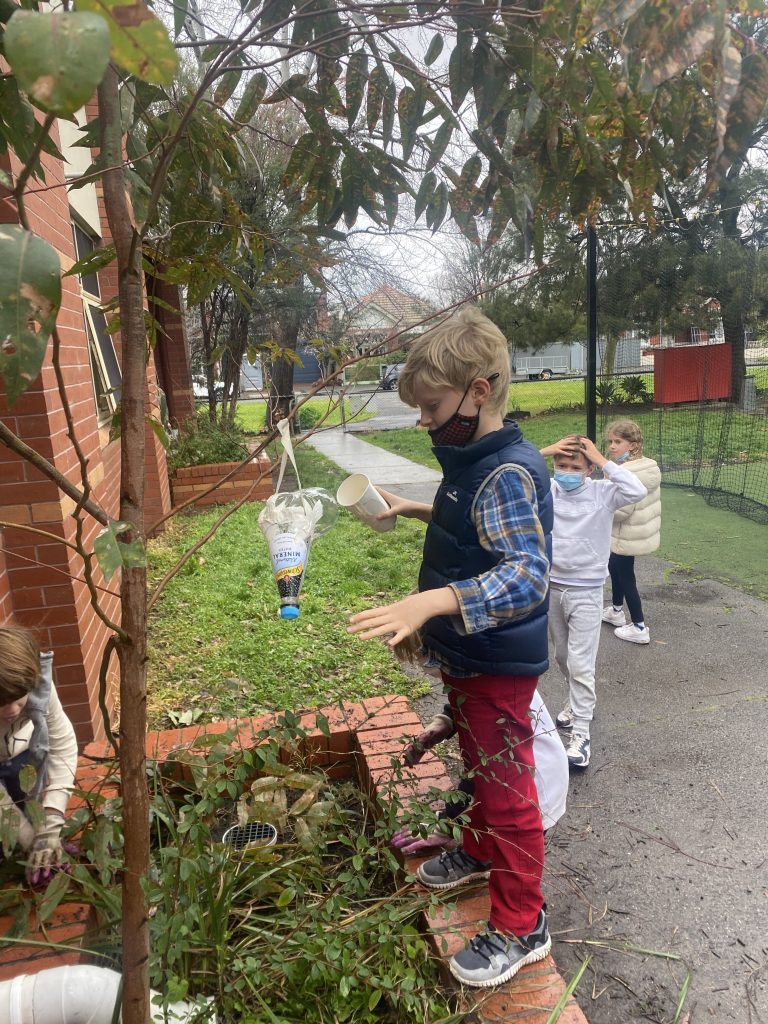
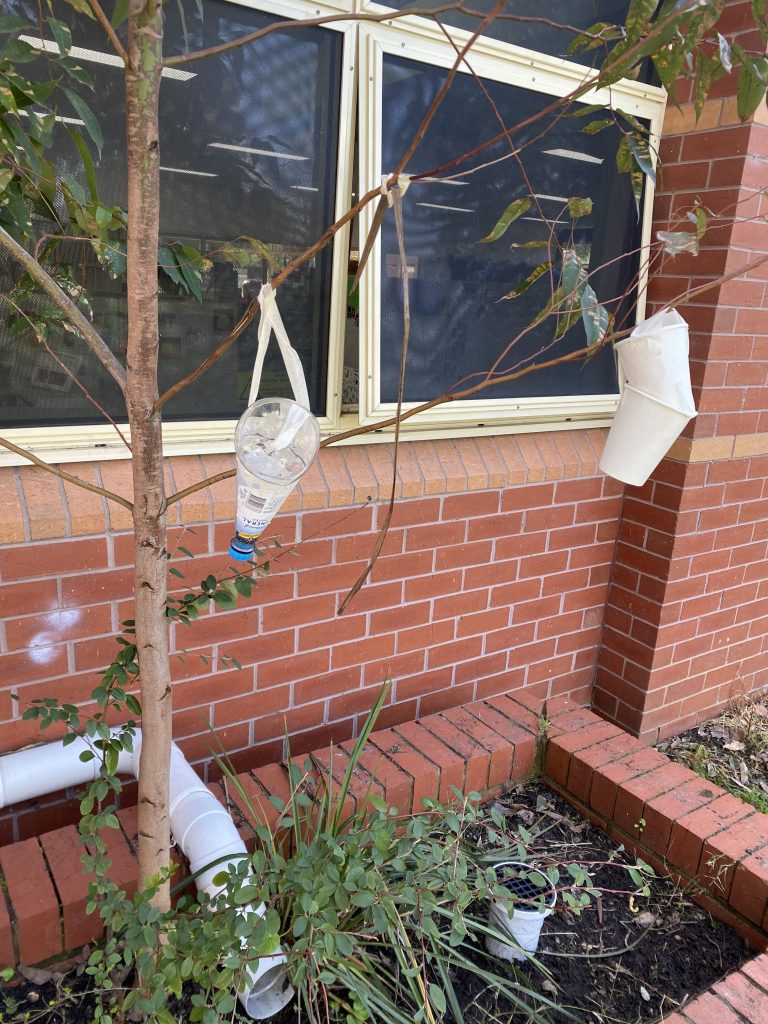
“Finn and I have been trying out a lot of self-watering systems the most successful has been the first one we made with a tube to help the rain go down into the garden.” (Elliot)
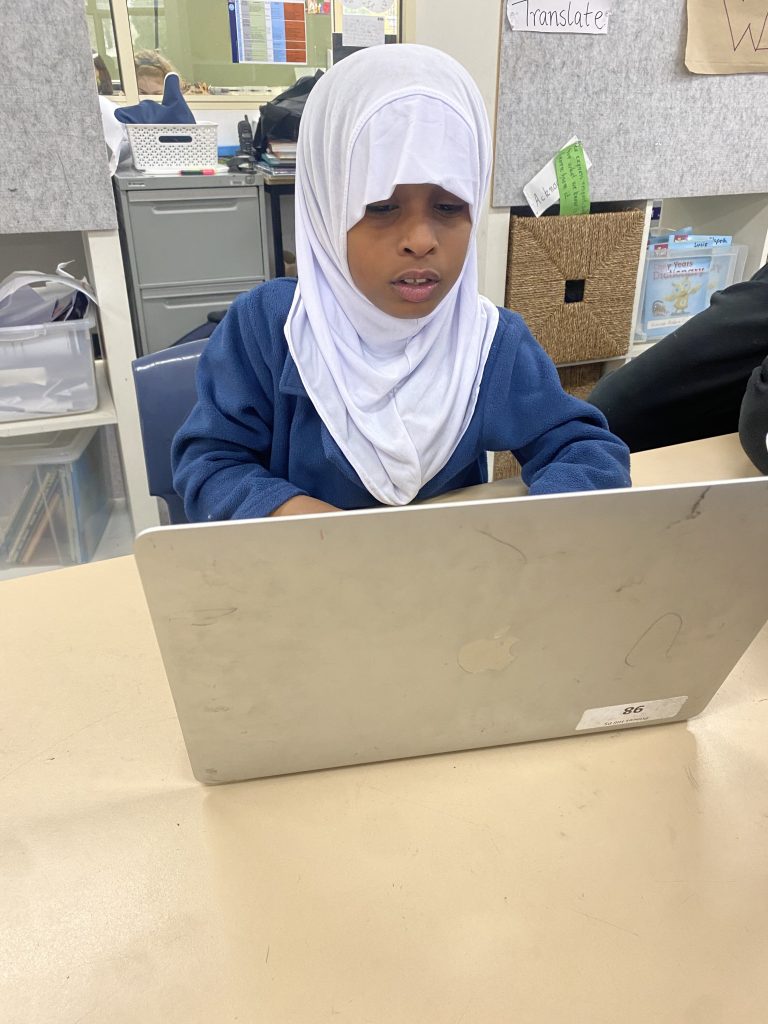
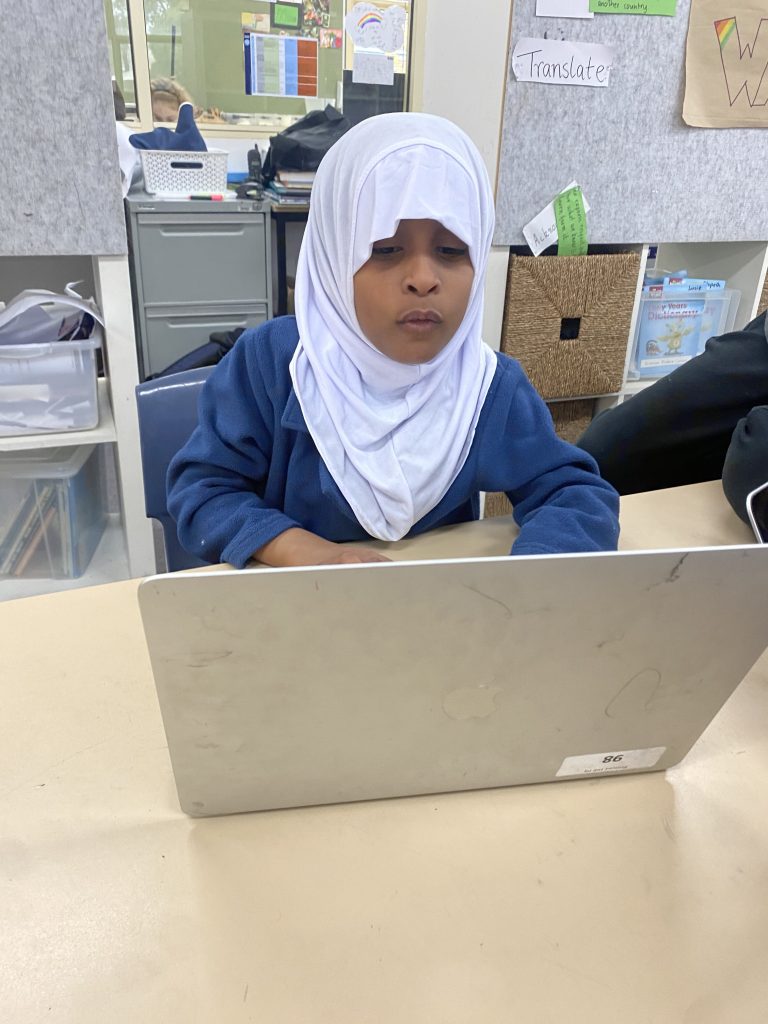
“My group and I are designing in Minecraft Education how the garden could look like once everything is planted.” (Simane)
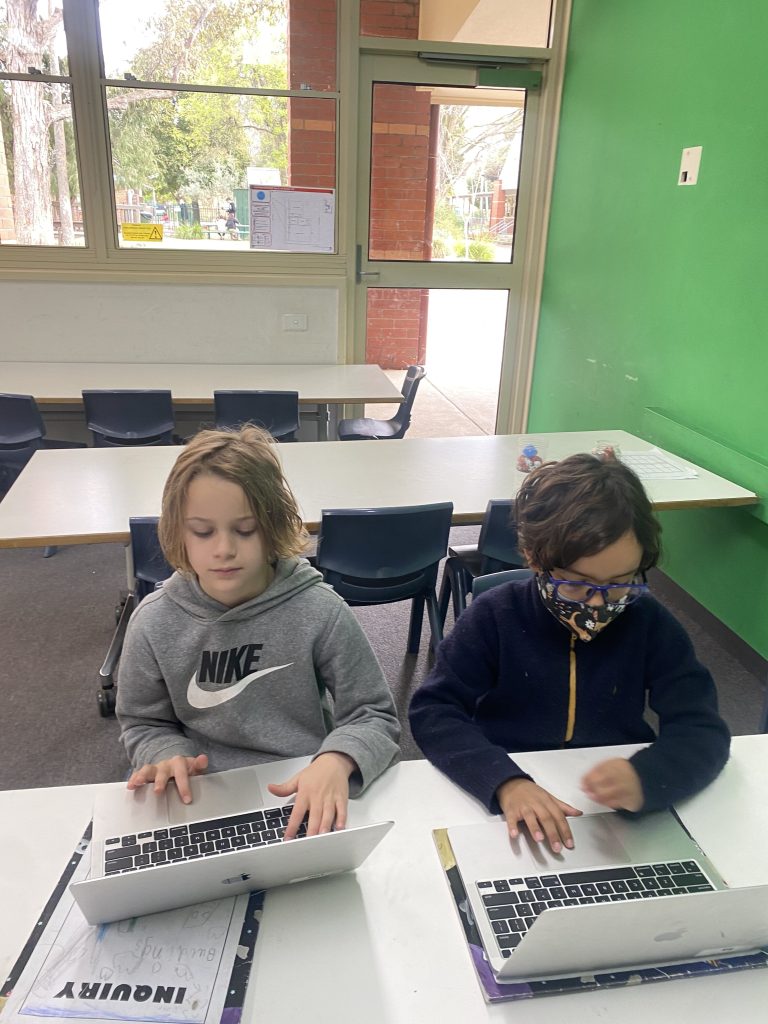
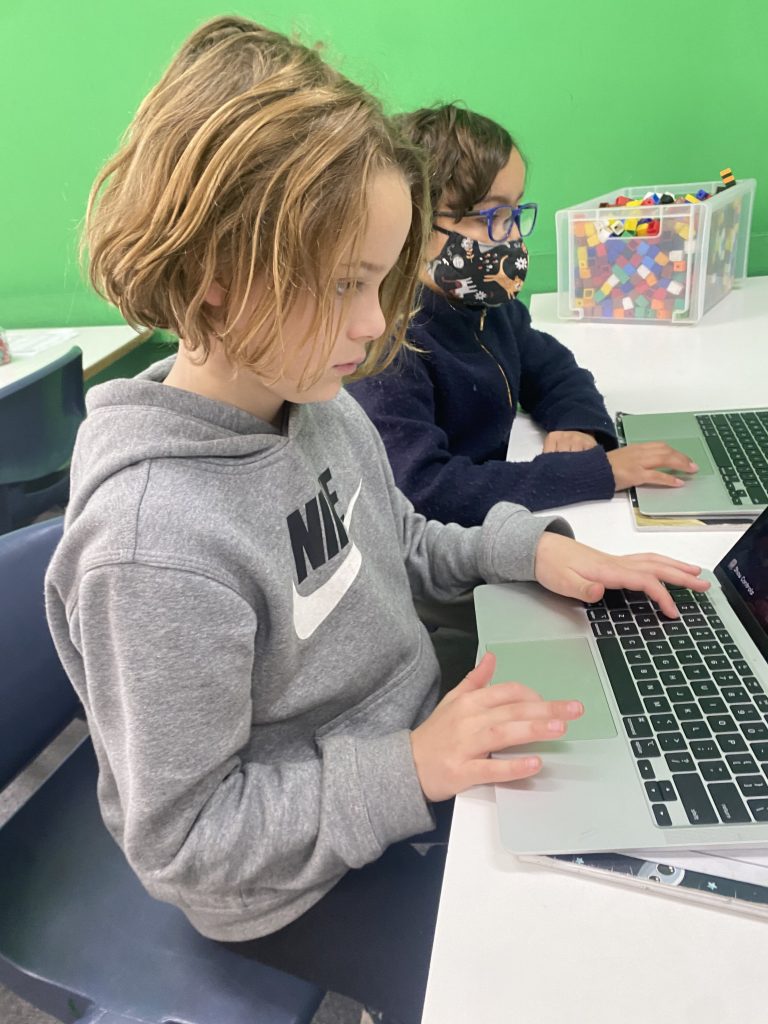
“My group is going on Minecraft Education to plan and map out where the plants can be planted.” (Noah)
“My group has been working on Minecraft Education designing lots of gardens with Pigface. It’s a beautiful plant.” (Van)
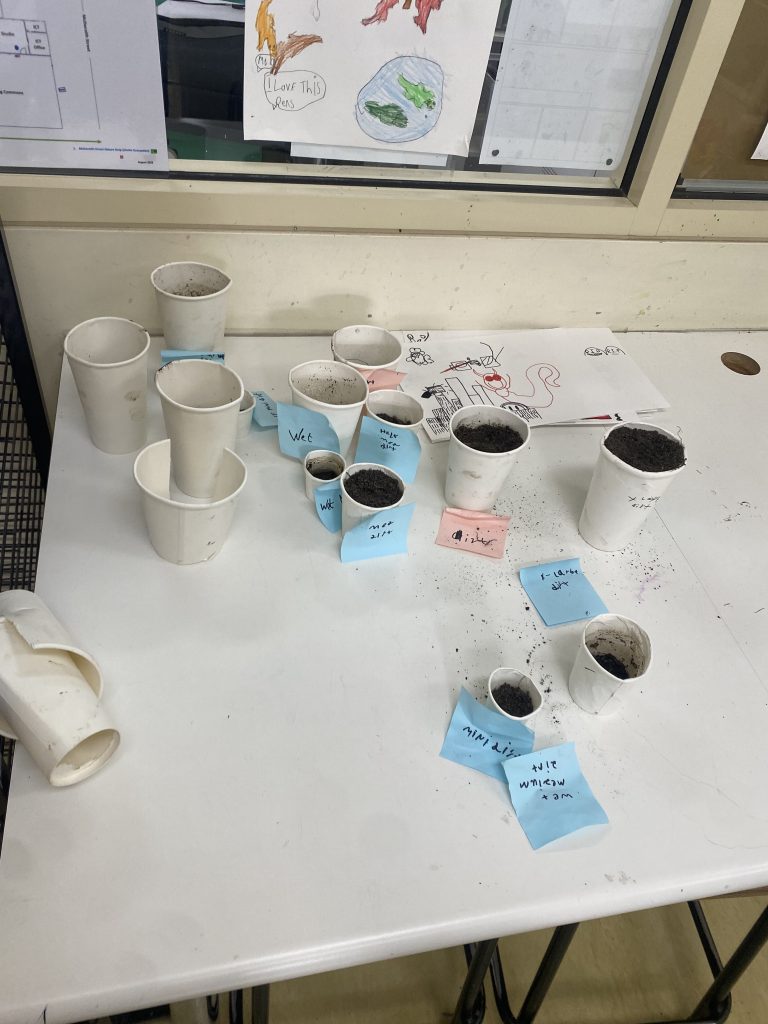
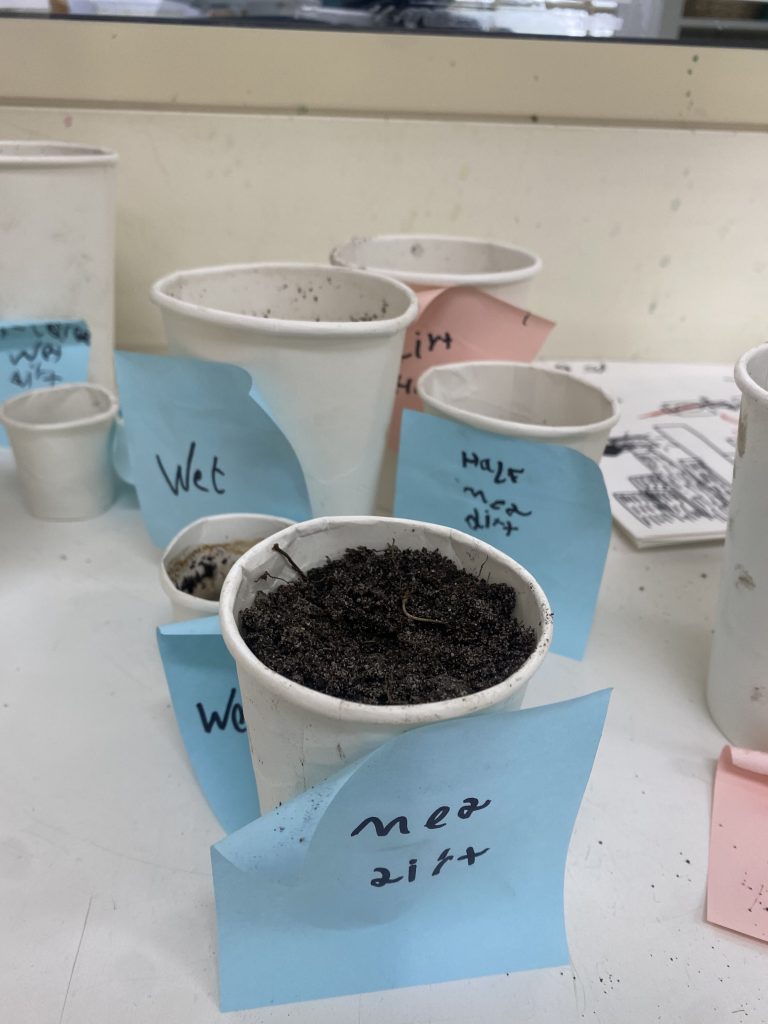
“James and I have made pots and filled them with dirt to test whether the pot holds wet soil and how much.” (Henry L)
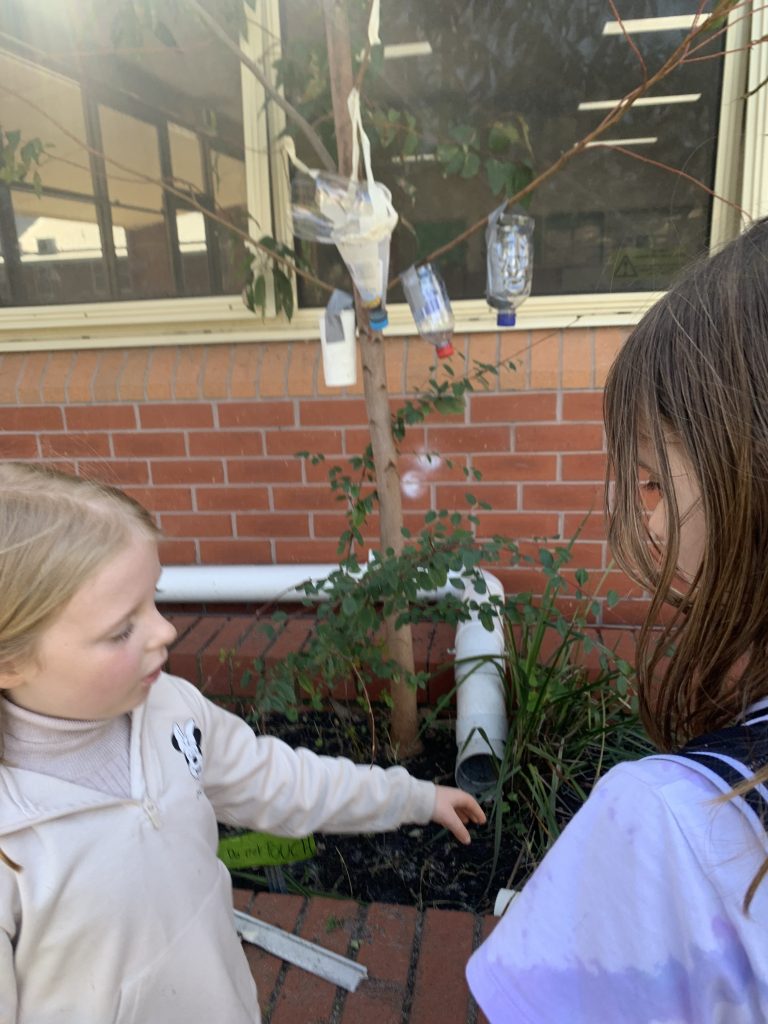
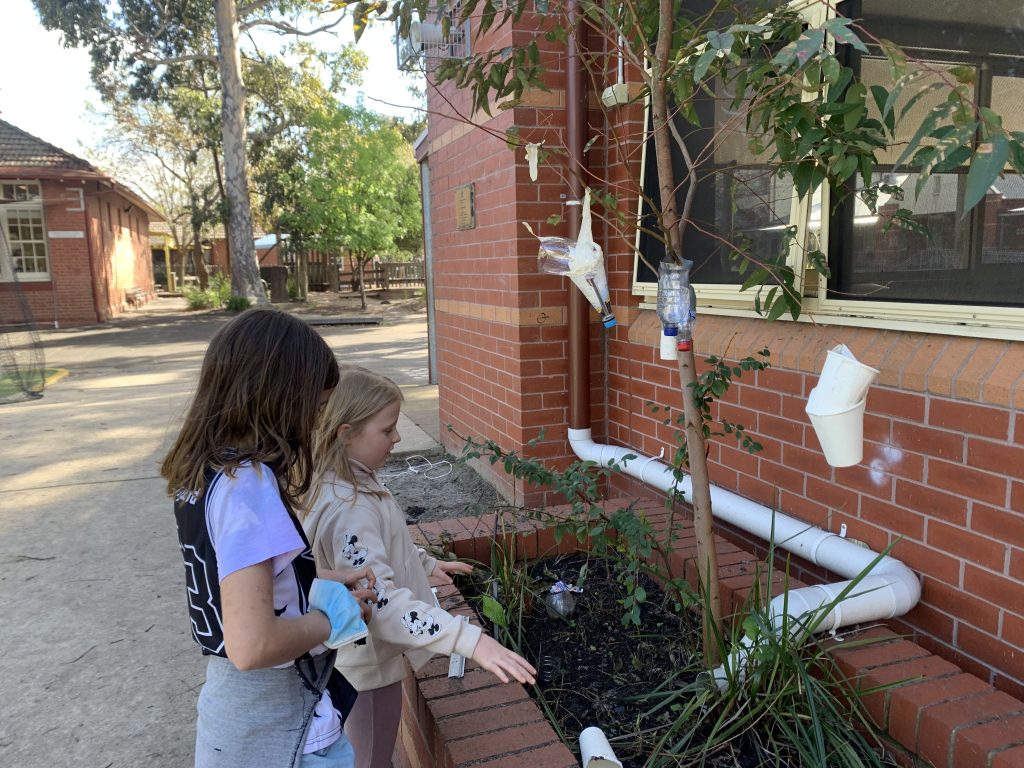
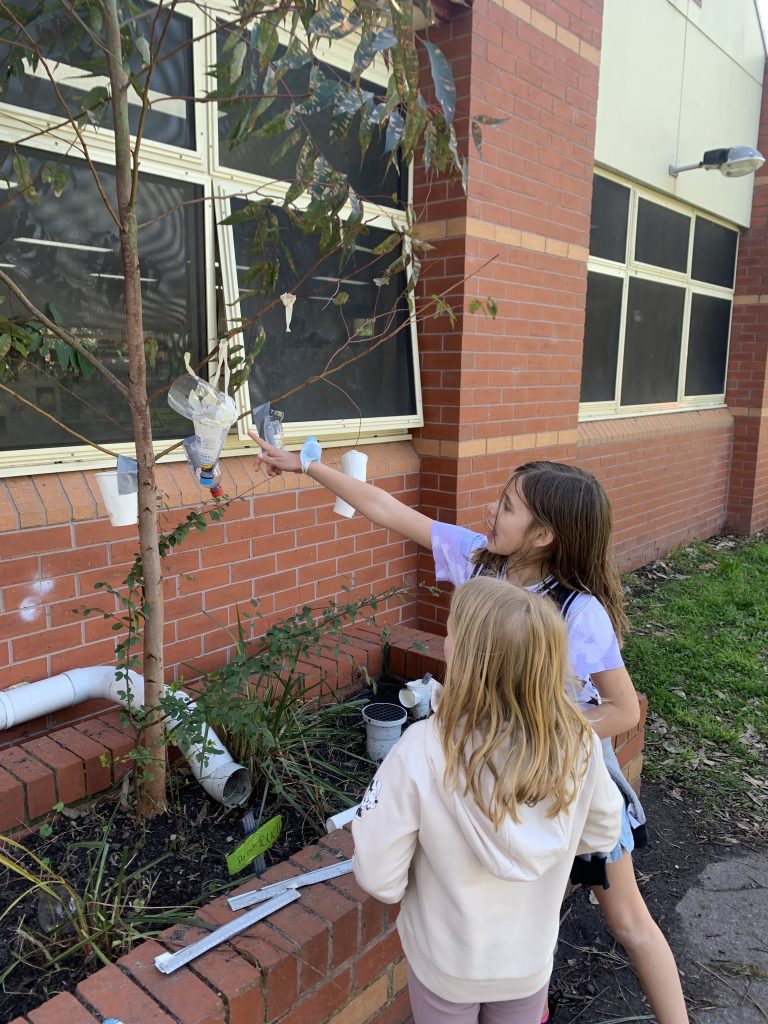
“Esther and I are trying to decide which invention for self-watering systems and rain surveys works best.” (Billie)
